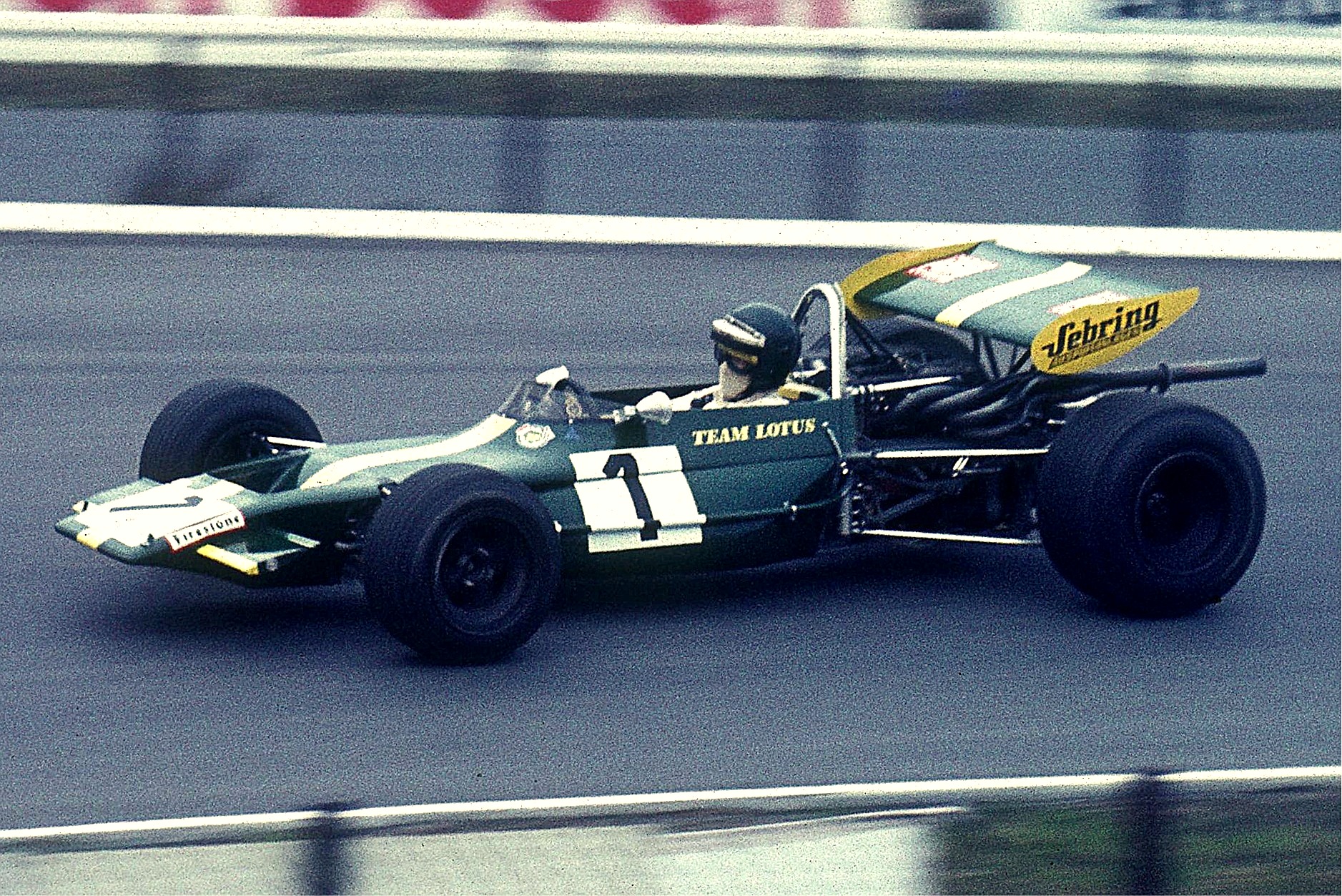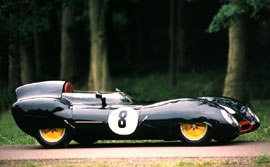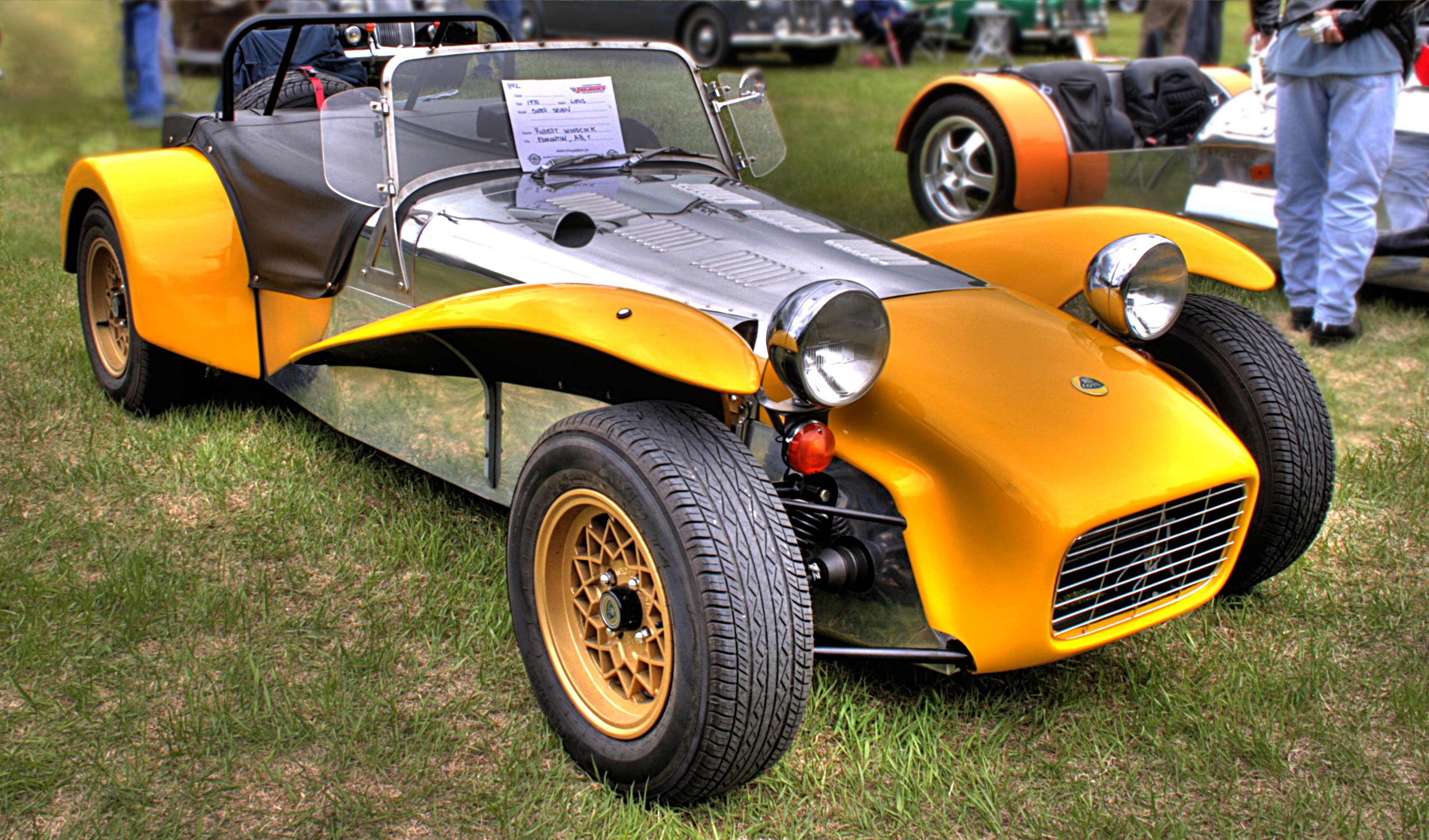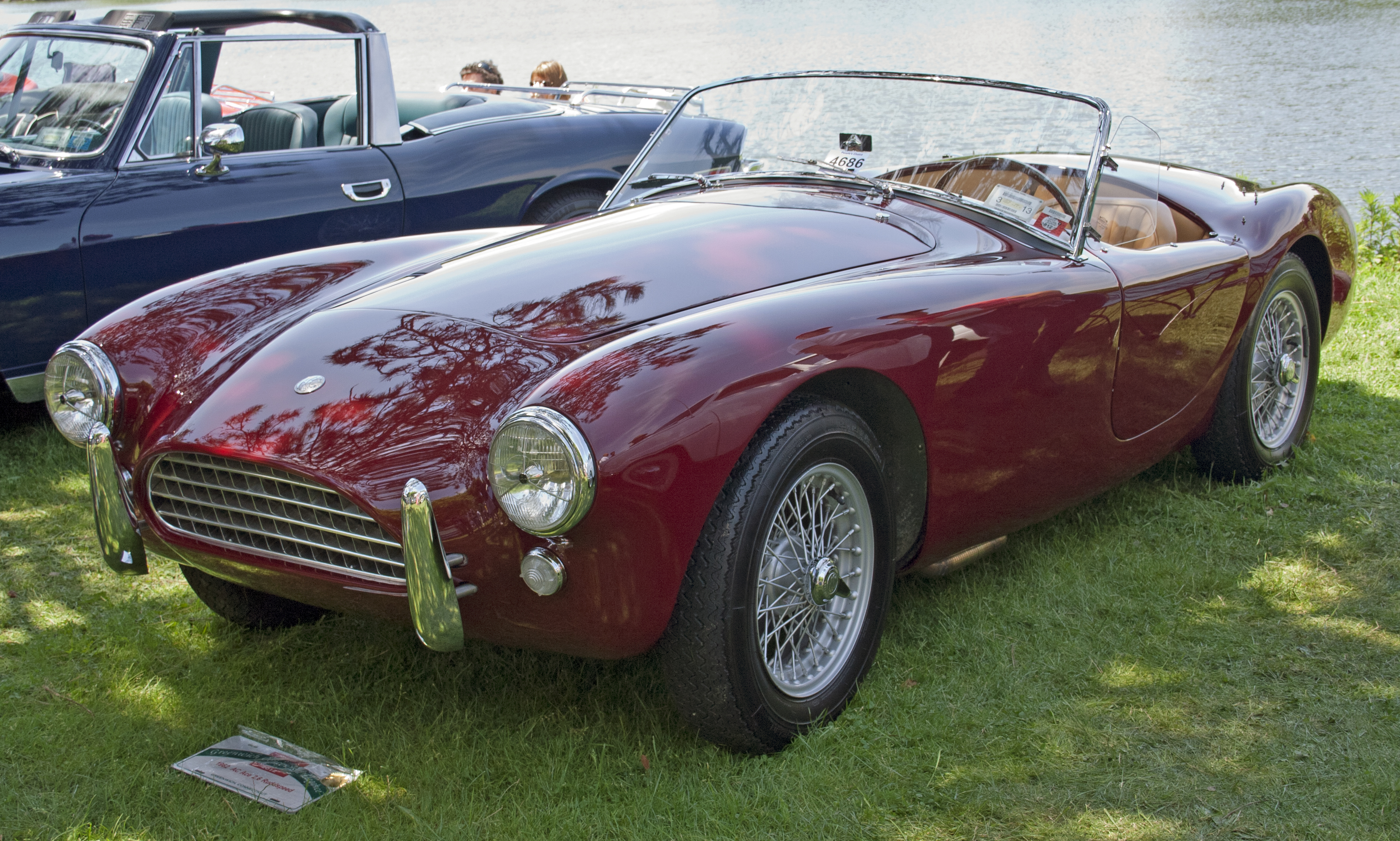|
Betty Haig
Elizabeth Haig (1905–1987) was a British racing driver who competed in rallying, hill climbs and historic racing. She won the 1936 Olympic Rally, the first and last time after 1900 that an automobile race was part of the Olympic Games. Biography Early years Haig was born in Marylebone, London in 1905. She was a member of the Scottish Haig (whisky), whisky-distilling Haig family. Her father was Colonel Oliver Haig. She was also the grand-niece of Field Marshal Douglas Haig, 1st Earl Haig, Douglas Haig, commander of the British Expeditionary Force (World War I), British Expeditionary Force (BEF) on the Western Front from 1915 to 1919. Her earliest years were spent in the family home in Ramornie in Fife, Scotland. In the early 1920s her parents divorced, and Haig moved to Sussex with her mother and brother. As a young girl Haig pursued equestrian sports such as riding, hunting and show-jumping. While still a schoolgirl she was taken for a ride in the Fiat Mephistopheles. At 14 ... [...More Info...] [...Related Items...] OR: [Wikipedia] [Google] [Baidu] |
Marylebone
Marylebone (usually , also , ) is a district in the West End of London, in the City of Westminster. Oxford Street, Europe's busiest shopping street, forms its southern boundary. An Civil parish#Ancient parishes, ancient parish and latterly a metropolitan borough, it merged with the boroughs of Metropolitan Borough of Westminster, Westminster and Metropolitan Borough of Paddington, Paddington to form the new City of Westminster in 1965. Marylebone station lies two miles north-west of Charing Cross. History Marylebone was originally an Civil parish#ancient parishes, Ancient Parish formed to serve the manors (landholdings) of Lileston (in the west, which gives its name to modern Lisson Grove) and Tyburn in the east. The parish is likely to have been in place since at least the twelfth century and will have used the boundaries of the pre-existing manors. The boundaries of the parish were consistent from the late twelfth century to the creation of the Metropolitan Borough which ... [...More Info...] [...Related Items...] OR: [Wikipedia] [Google] [Baidu] |
Prescott Speed Hill Climb
Prescott Speed Hill Climb is a Hillclimbing, hillclimb in Gloucestershire, England. The course used for most events (the "Long Course") is in length, and the hill record is held by Wallace Menzies who took the outright hill record in a Gould GR59M single seater with a time of 34.65 seconds on Sunday 5 September 2021. The track was extended in 1960 to form the present Long Course. There is also a "Short Course" of , now used only by meetings organised by the Vintage Sports-Car Club. History Bugatti Owners' Club The track is owned by the Bugatti Owners' Club (BOC), founded in 1929, who were looking for a permanent home and bought the land in 1937. The club had previously run events at Lewes Speed Trials, Lewes and on the Chalfont Heights Estate, Chalfont St Peter, Buckinghamshire. The club also ran a one-off event at Joel Park, Northwood Hill, Middlesex, on 22 June 1935, which was won by Richard Ormonde Shuttleworth, on a Bugatti, in a time of 30.16 sec. The BOC planned to deve ... [...More Info...] [...Related Items...] OR: [Wikipedia] [Google] [Baidu] |
Jaguar XKSS
The Jaguar XKSS is a road-going version of the Jaguar D-Type racing car, initially built in 1957. Only 16 were built and sold at the time. Nine were destroyed in a factory fire in 1957. In 2016 Jaguar announced that a small production run of nine "continuation" XKSS reproductions would be hand-built to the original specifications to complete the originally scheduled run of 25. History Following Jaguar's withdrawal from competition at the end of the 1956 season, a number of completed and partly completed D-types remained unsold at the Browns Lane factory. In an attempt to recoup some of the investment made in building these unused chassis, and to exploit the lucrative American market for high-performance European sports cars, Sir William Lyons decided to convert a number to road-going specification. Only minor changes were made to the basic D-type structure: the addition of a passenger side door; the removal of the large fin behind the driver; and the removal of the divider bet ... [...More Info...] [...Related Items...] OR: [Wikipedia] [Google] [Baidu] |
Enid Riddell
Enid Mary Riddell was a British socialite and racing driver during the 1930s and 1940s. She was also a member of some far-right political groups in the United Kingdom and was imprisoned for violating the Official Secrets Act 1911 during the Second World War. Biography Early years Riddell was born in Marylebone, London, on 23 March 1903. Middle years Described as a striking and poised young woman-about-town, Riddell pursued two interests: motor racing and fascism. She was a member of the Nordic League, a far-right, pro-Nazi organisation that worked to co-ordinate similarly-minded groups in Britain. She was also a member of the Right Club (RC), a British fascist and antisemitic group established by the Scottish Unionist member of parliament (MP) Archibald Maule Ramsay, often referred to as "Captain Ramsay". Riddell had been recruited to the RC by Anna Wolkoff, daughter of Admiral Nikolai Wolkoff (1870–1954), the last Imperial Russian naval attaché posted to London before the r ... [...More Info...] [...Related Items...] OR: [Wikipedia] [Google] [Baidu] |
BMW 328
The BMW 328 was a sports car offered by BMW from 1936 to 1940, with the body design credited to Peter Szymanowski, who became BMW chief of design after World War II (although technically the car was designed by Fritz Fiedler). Specifications Awards In 1999 the BMW 328 was named one of 25 finalists for Car of the Century by a worldwide panel of automotive journalists. Motorsports The 328 was introduced at the Eifelrennen race at the Nürburgring in 1936, where Ernst Henne drove it to win the 2.0-litre class.Noakes, p. 31 The 328 had more than 100 class wins in 1937, including the RAC Tourist Trophy, the Österreichische Alpenfahrt, and the La Turbie hillclimb. Norbye, pp. 66–67 In 1938, the 328 won its class at the RAC Tourist Trophy,Noakes, p. 35 the Alpine Rally, and the Mille Miglia. The 328 won the RAC Rally in 1939 and came in fifth overall and first in class in the 1939 24 Hours of Le Mans. Norbye, p. 67 Frank Pratt won the 1948 Australian Grand Prix driving a ... [...More Info...] [...Related Items...] OR: [Wikipedia] [Google] [Baidu] |
Formula Two
Formula Two (F2 or Formula 2) is a type of open-wheel formula racing category first codified in 1948. It was replaced in 1985 by Formula 3000, but revived by the FIA from 2009–2012 in the form of the FIA Formula Two Championship. The name returned in 2017 when the former GP2 Series became known as the FIA Formula 2 Championship. History While Formula One has generally been regarded as the pinnacle of open-wheeled auto racing, the high-performance nature of the cars and the expense involved in the series has always meant a need for a path to reach this peak. For much of the history of Formula One, Formula Two has represented the penultimate step on the motorsport ladder. Pre-war Prior to the Second World War, there usually existed a division of racing for cars smaller and less powerful than Grand Prix racers. This category was usually called voiturette ("small car") racing and provided a means for amateur or less experienced drivers and smaller marques to prove themselves. ... [...More Info...] [...Related Items...] OR: [Wikipedia] [Google] [Baidu] |
Coventry Climax
Coventry Climax was a British forklift truck, fire pump, racing, and other specialty engine manufacturer. History Pre WW1 The company was started in 1903 as Lee Stroyer, but two years later, following the departure of Stroyer, it was relocated to Paynes Lane, Coventry, and renamed as Coventry-Simplex by H. Pelham Lee, a former Daimler Company, Daimler employee, who saw a need for competition in the nascent piston engine market. An early user was GWK (car), GWK, who produced over 1,000 light cars with Coventry-Simplex two-cylinder engines between 1911 and 1915. Just before the First world war, First World War, a Coventry-Simplex engine was used by Lionel Martin to power the first Aston Martin car. Ernest Shackleton selected Coventry-Simplex to power the tractors that were to be used in his Imperial Trans-Antarctic Expedition of 1914. Hundreds of Coventry-Simplex engines were manufactured during the First World War to be used in generating sets for searchlights. Post WW1 In 1 ... [...More Info...] [...Related Items...] OR: [Wikipedia] [Google] [Baidu] |
De Dion Tube
De Dion rear axle A de Dion tube is a form of non-independent automobile suspension. It is a considerable improvement over the swing axle, Hotchkiss drive, or live axle. Because it plays no part in transmitting power to the drive wheels, it is sometimes called a "dead axle".Setright, p.515. A de Dion suspension uses a universal joint at both the wheel hubs and differential, and uses a solid tubular beam to hold the opposite wheels in parallel. Unlike an anti-roll bar, a de Dion tube is not directly connected to the chassis nor is it intended to flex. In suspension geometry it is a beam axle suspension. History The de Dion tube was named after Comte Jules-Albert de Dion, founder of French automobile manufacturer De Dion-Bouton. The tube, however, was invented around 1894 by co-founder Charles Trépardoux for use on the company's steam tricycles. G.N. Georgano, p. 27. Advantages and disadvantages Advantages: #Reduced unsprung weight compared to the Hotchkiss drive (live axl ... [...More Info...] [...Related Items...] OR: [Wikipedia] [Google] [Baidu] |
Lotus Eleven
The Lotus Eleven is a sports racing car built in various versions by Lotus from 1956 until 1958. The later versions built in 1958 are sometimes referred to as Lotus 13, although this was not an official designation. In total, about 270 Elevens of all versions were built. Design and performance The Eleven was designed by Colin Chapman and fitted with a sleek body designed by aerodynamicist Frank Costin. Its top version, dubbed ''Le Mans'', was fitted with a 1100 cc (67ci) Coventry Climax FWA engine ;occasionally with a 1500 cc (92ci)Setright, L.J.K, "Lotus: The golden mean", in Northey, Tom, ed. World of Automobiles (London: Orbis, 1974), Volume 11, p.1224. Coventry Climax FWB engine), mounted in the front of a tubular space frame. The Eleven featured a De Dion tube rear axle and Girling disc brakes. Fully loaded, the car weighed only about . Versions for a 1100 cc (67ci)Setright, p.1224. Climax engine (''Club'') and a 1172 cc (72ci) Ford engine (''Sport'') were also produced; ... [...More Info...] [...Related Items...] OR: [Wikipedia] [Google] [Baidu] |
Lotus Seven
The Lotus Seven is a small, simple, lightweight, two-seater, open-top, open-wheel, sports car produced by the British manufacturer Lotus Cars (initially called Lotus Engineering) between 1957 and 1972. It was designed by Lotus founder Colin Chapman and has been considered the embodiment of the Lotus philosophy of performance through low weight and simplicity. The original model was highly successful with more than 2,500 cars sold, due to its attraction as a road legal car that could be used for clubman racing. After Lotus ended production of the Seven, Caterham bought the rights and today Caterham makes both kits and fully assembled cars based on the original design known as the Caterham 7. The Lotus Seven design has spawned a host of imitations on the kit car market, generally called ''Sevens'' or ''Sevenesque'' roadsters. History The Lotus Seven was launched in 1957 to replace the Mark VI as the 'entry-level' Lotus model, The Seven name was left over from a model th ... [...More Info...] [...Related Items...] OR: [Wikipedia] [Google] [Baidu] |
AC Ace
AC Ace is a car which was produced by AC Cars of Thames Ditton, England, from 1953 until 1963. History AC came back to the market after the Second World War with the 2-Litre range of cars in 1947, but it was with the Ace sports car of 1953 that the company really made its reputation in the post war years. Casting around for a replacement for the ageing 2-Litre, AC took up a design by John Tojeiro that used a light, ladder-type tubular frame, all independent transverse leaf spring suspension, and an open two-seater alloy body made using English wheeling machines, possibly inspired by the Ferrari Barchetta of the day. Early cars used AC's elderly two-litre overhead cam straight-six engine (first seen soon after the end of the First World War), which, according to a 1954 road test by ''Motor'' magazine, gave a top speed of and in 11.4 seconds and a fuel consumption of . It was hardly a sporting engine however, and it was felt that something more modern and powerful was r ... [...More Info...] [...Related Items...] OR: [Wikipedia] [Google] [Baidu] |
Austin-Healey 100
The Austin-Healey 100 is a sports car that was built by Austin-Healey from 1953 until 1956. Based on Austin A90 Atlantic mechanicals, it was developed by Donald Healey to be produced in-house by his small Healey car company in Warwick. Healey built a single Healey Hundred for the 1952 London Motor Show, and the design impressed Leonard Lord, managing director of Austin, who was looking for a replacement for the unsuccessful A90. Body styling was by Gerry Coker, the chassis was designed by Barry Bilbie with longitudinal members and cross bracing producing a comparatively stiff structure upon which to mount the body, innovatively welding the front bulkhead to the frame for additional strength. In order to keep the overall vehicle height low the rear axle was underslung, the chassis frame passing under the rear axle assembly. Lord struck a deal with Healey to build it in quantity; bodies made by Jensen Motors were given Austin mechanical components at Austin's Longbridge plant. ... [...More Info...] [...Related Items...] OR: [Wikipedia] [Google] [Baidu] |

.jpg)
.jpg)




